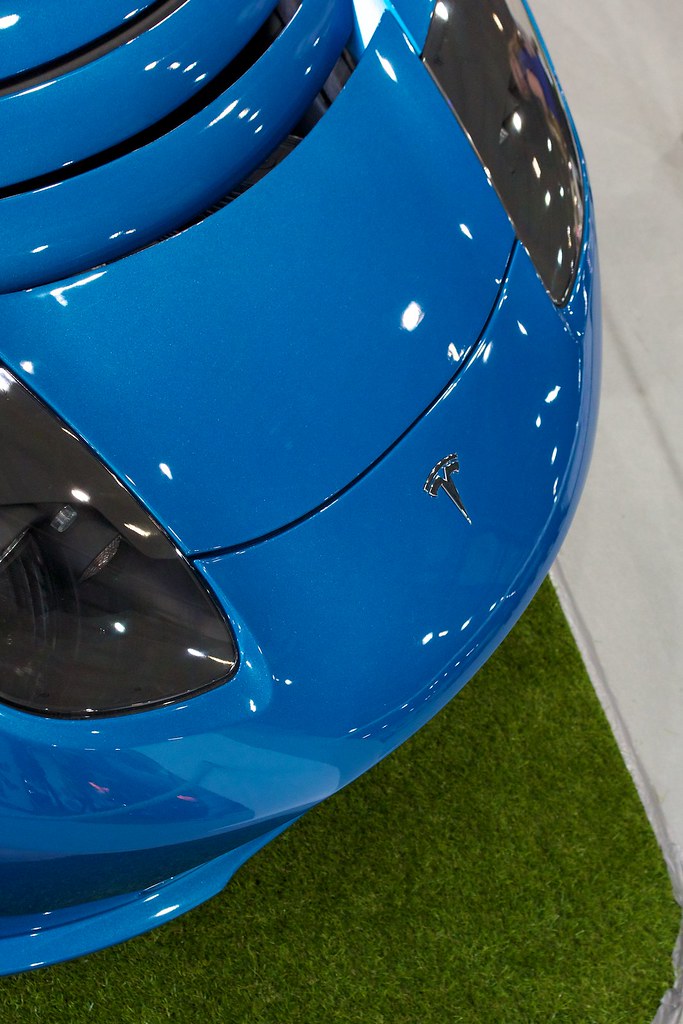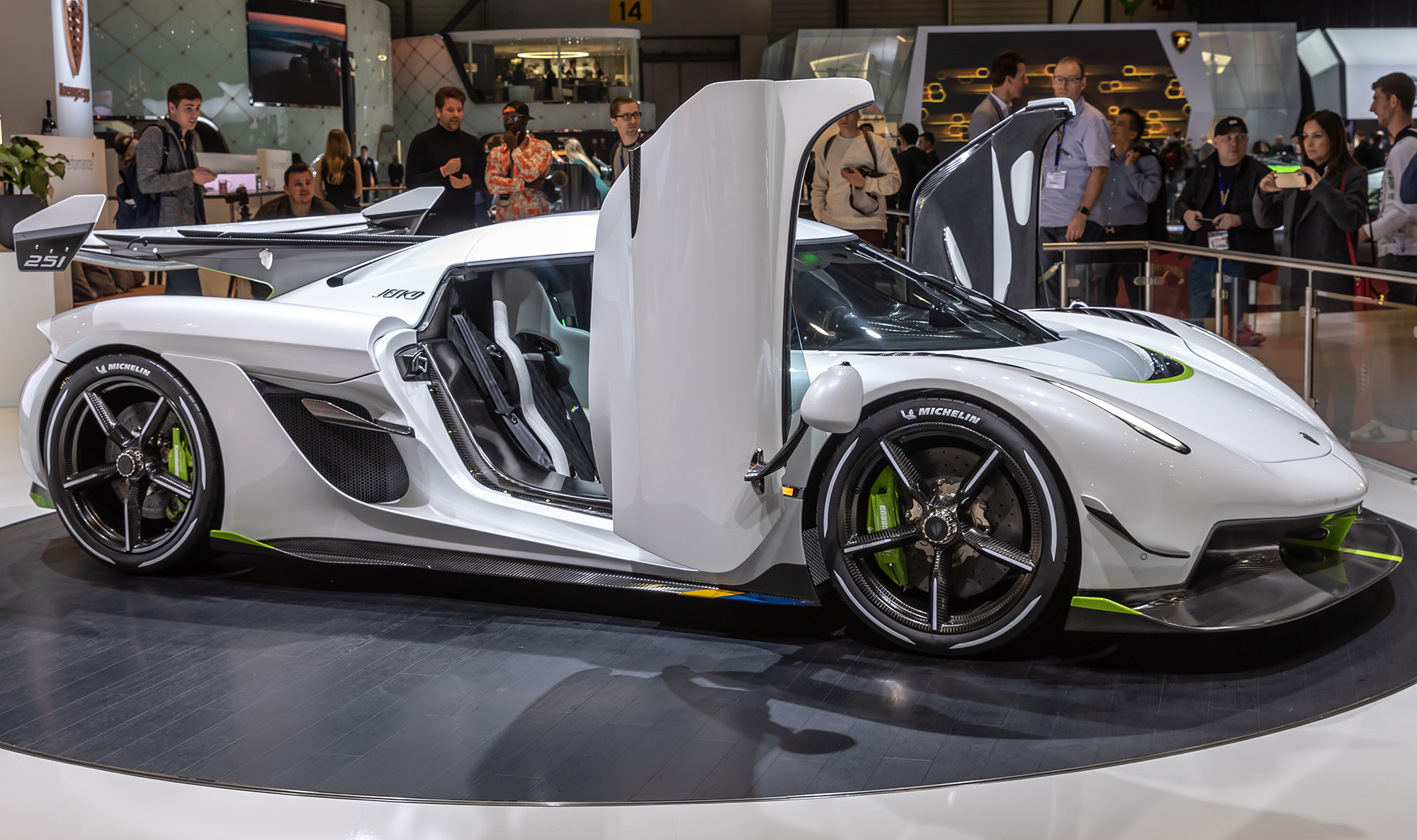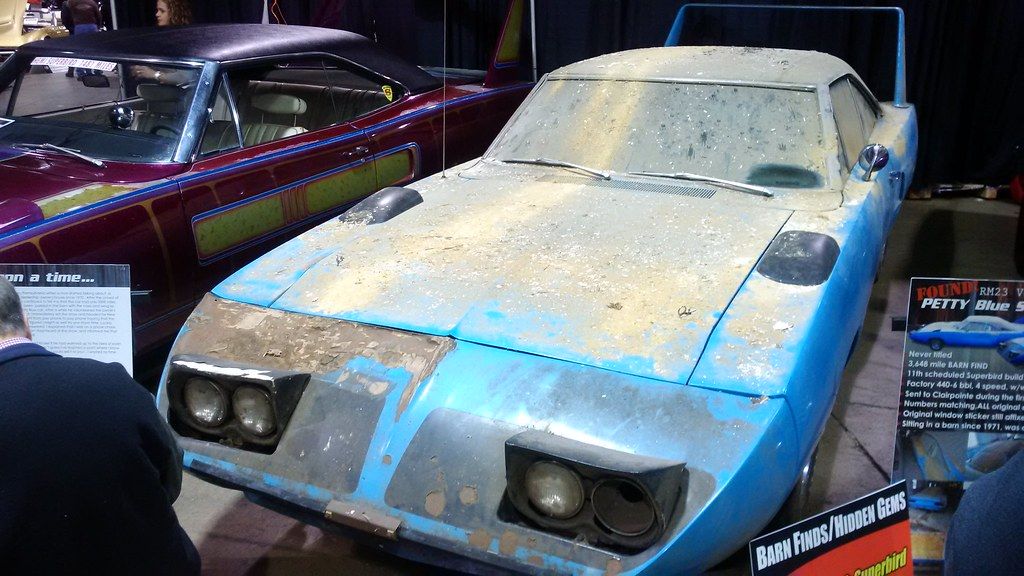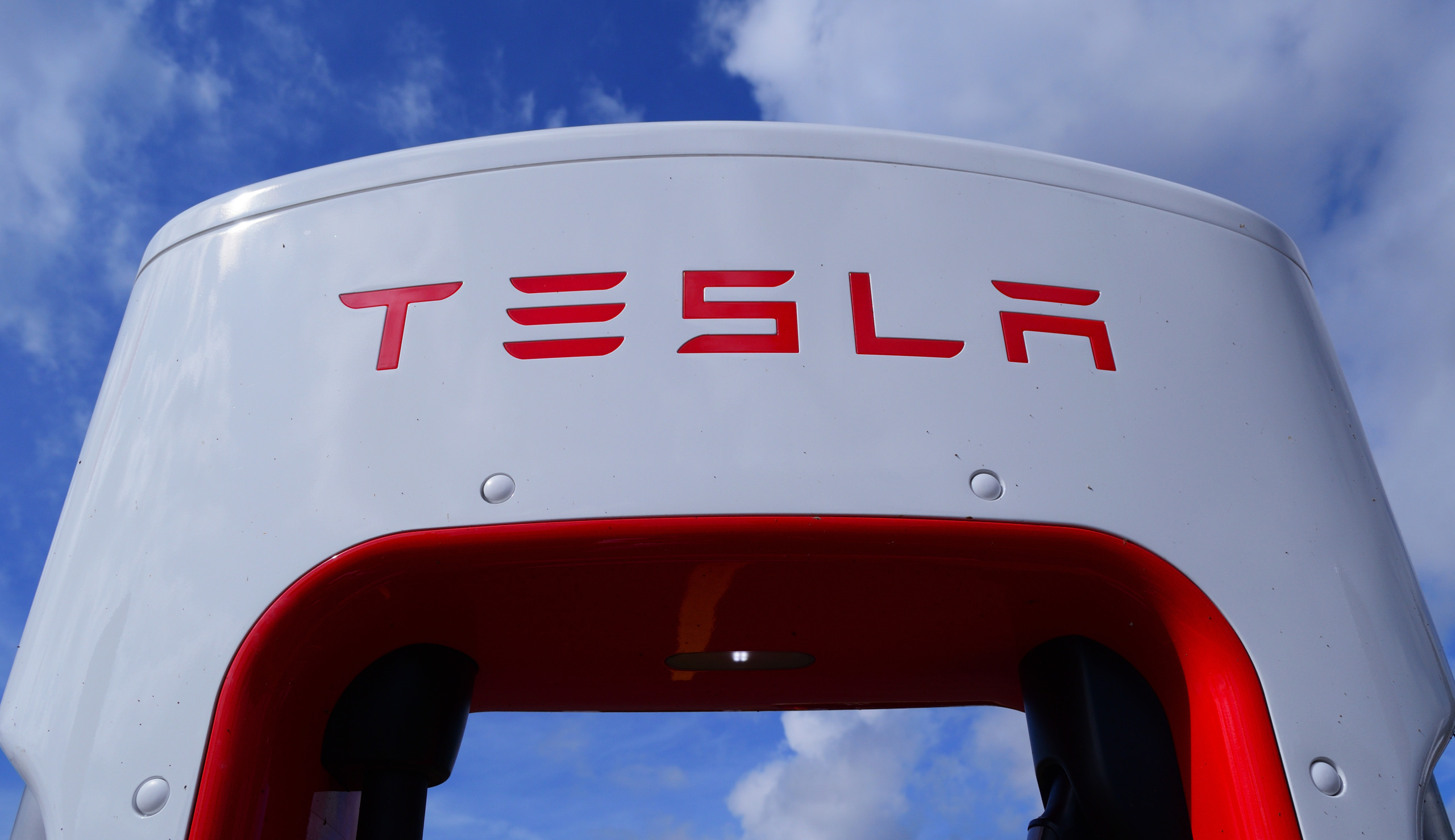
The automotive world is once again abuzz with news surrounding Tesla, this time stemming from a significant recall concerning the Model 3 and Model Y, reportedly due to a rollaway risk caused by a software glitch. This development, while concerning for owners and potential buyers, casts a spotlight on the intricate balance between rapid technological innovation, software reliance, and vehicle safety that defines the modern automotive industry, especially at a company like Tesla. It forces a deeper inquiry into how a company known for pushing boundaries navigates the complexities of mass production and software integrity.
Tesla, a company that has long set the tone for the electric vehicle industry, constantly operates under intense scrutiny. Despite its dominant position as the leading seller of electric vehicles in the United States, its market share has seen fluctuations, dipping below 50 percent. This dynamic backdrop of leadership and competition means that any issue, particularly one affecting its most popular models like the Model 3 and Model Y, reverberates widely, prompting both critical analysis and a renewed examination of the company’s operational ethos.
This article will delve into the multifaceted aspects of Tesla’s recent trajectory, exploring the context surrounding its flagship models, the Model 3 and Model Y. We will examine the company’s strategic responses to market pressures, the tangible changes introduced in its vehicles, and the overarching role of software and AI in its ecosystem. Furthermore, we will contextualize these developments within Tesla’s documented history of confronting safety defects and recalls, aiming to provide a comprehensive understanding of the challenges and innovations shaping its future.
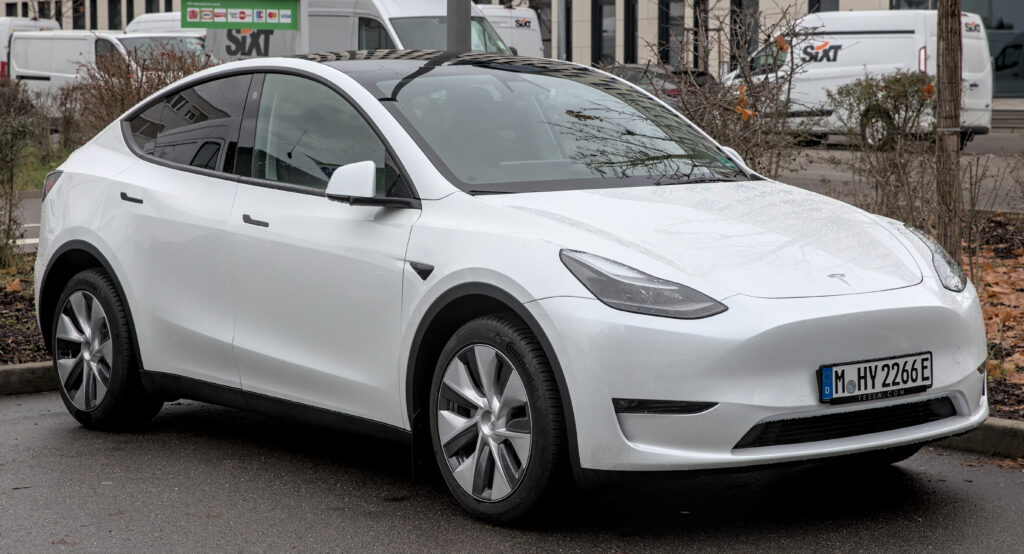
1. **The Introduction of Cheaper Model Y and Model 3**The automotive landscape recently witnessed a pivotal move from Tesla, as the company unveiled new, more accessible versions of its immensely popular Model Y and Model 3. These updated iterations are priced approximately $5,000 less than their predecessors, a strategic adjustment that brings Tesla’s offerings closer to the cost of comparable gasoline-powered vehicles. For consumers, this translates into starting prices of around $40,000 for the Model Y and $37,000 for the Model 3, a significant shift designed to broaden their market appeal.
This pricing strategy signals a clear intent to capture a larger segment of the mainstream market, challenging the perception of electric vehicles as exclusively high-end propositions. The move is particularly noteworthy given the broader industry trends, where a growing number of electric vehicles are becoming available in the $35,000 to $40,000 range. While still more expensive upfront than many hybrid or gasoline models from manufacturers like Toyota or Honda, these new Tesla prices position them more competitively against luxury gasoline cars from brands such as BMW or Mercedes-Benz, offering a compelling alternative in the evolving automotive market.
The introduction of these cheaper models represents more than just a price adjustment; it is a fundamental re-calibration of Tesla’s market approach. By making these core models more attainable, Tesla is not only responding to consumer demand for affordability but also actively shaping the future of EV adoption. This strategic pivot underscores the company’s ongoing commitment to accelerating the world’s transition to sustainable energy, recognizing that wider accessibility is key to achieving this ambitious mission and maintaining its leadership in the global EV space.
Read more about: Tesla’s Strategic Price Adjustments and Their Profound Impact on the Used Car Market
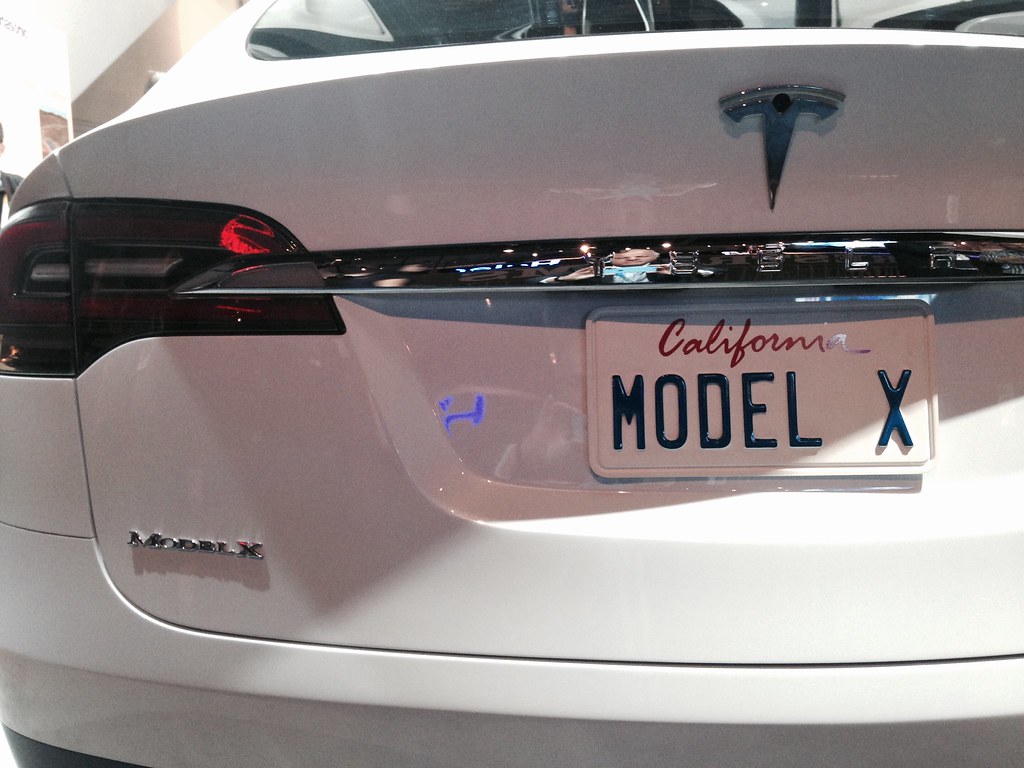
2. **Market Strategy Post-Tax Credit Expiration**The timing of Tesla’s unveiling of these more affordable Model Y and Model 3 versions is not coincidental; it directly addresses a significant shift in the U.S. electric vehicle market. These cheaper models are explicitly “aimed at propping up sales after a federal tax credit for electric vehicle purchases expired at the end of September.” This expiration removed a crucial $7,500 incentive that had previously made qualified electric vehicles more attractive to buyers.
The federal tax credit’s discontinuation, influenced by political decisions from President Trump and Republicans in Congress, has created a new challenge for EV manufacturers. Tesla’s response with these price reductions could be an early indicator of how other automakers will adapt their product lines and pricing structures in a post-subsidy environment. This highlights a dynamic market where external policy changes can significantly impact consumer purchasing decisions and necessitate agile strategic adjustments from industry leaders.
Indeed, the impact of the tax credit’s expiration was keenly felt. Tesla itself reported record deliveries for the third quarter, but “analysts attributed the surge to people rushing to buy before the end of the federal tax credit.” Consequently, sales were “expected to slump in months to come,” underscoring the urgent need for Tesla to introduce new incentives, such as lower upfront costs, to maintain sales momentum and navigate a less subsidized market effectively. This strategy demonstrates Tesla’s proactive approach to mitigating potential sales declines and sustaining its competitive edge.
Car Model Information: 2020 Lexus RX 350 Base
Name: Tesla Model 3
Manufacturer: Tesla, Inc.
Production: 2017–present
Assembly: unbulleted list
Designer: Franz von Holzhausen
Class: Mid-size car
BodyStyle: Sedan (car)
Layout: unbulleted list
Related: Tesla Model Y
Motor: unbulleted list
Transmission: Single-speed fixed (9:1 ratio)
Battery: unbulleted list
ElectricRange: unbulleted list
Charging: unbulleted list
Wheelbase: cvt
Length: unbulleted list
Width: cvt
Height: unbulleted list
Weight: cvt
Caption: 2019 Tesla Model 3 Performance
Categories: 2020s cars, ANCAP large family cars, All-wheel-drive vehicles, All Wikipedia articles in need of updating, All Wikipedia articles written in American English
Summary: The Tesla Model 3 is a battery electric powered mid-size sedan with a fastback body style built by Tesla, Inc., introduced in 2017. The vehicle is marketed as being more affordable to more people than previous models made by Tesla. The Model 3 was the world’s top-selling plug-in electric car for three years, from 2018 to 2020, before the Tesla Model Y, a crossover SUV based on the Model 3 chassis, took the top spot. In June 2021, the Model 3 became the first electric car to pass global sales of 1 million.
A facelifted Model 3 with revamped interior and exterior styling was introduced in late 2023 for countries supplied by Gigafactory Shanghai and in early 2024 in North America and other countries supplied by the Tesla Fremont Factory.
Get more information about: Tesla Model 3
Buying a high-performing used car >>>
Brand: Tesla Model: Model Y and Model 3
Price: $30,981 Mileage: 81,179 mi.
Read more about: Elon Musk’s $1 Billion Bet: How a CEO’s Bold Stock Purchase Erased Tesla’s 2025 Losses and Ignited a Bullish Revival
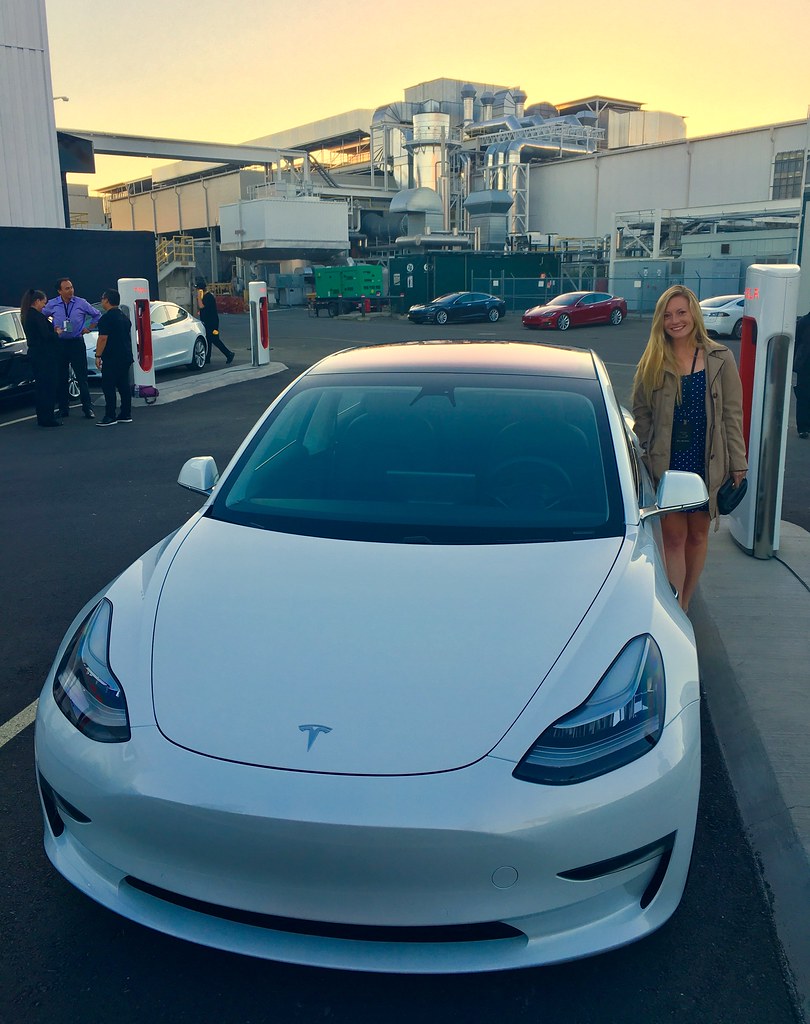
3. **Specific Design Changes in Cheaper Models**To achieve the more accessible price points for the new Model Y and Model 3, Tesla implemented a series of thoughtful adjustments to the vehicles’ specifications and features. While maintaining the “same basic body shapes as the existing Model Y and Model 3,” these cheaper versions introduce interior and exterior alterations designed to streamline production costs without fundamentally compromising the Tesla driving experience. These changes reflect a careful balancing act between affordability and perceived value.
Inside the cabin, the most notable changes include “cloth interiors, fewer speakers and less soundproofing.” These modifications, while contributing to cost savings, also differentiate these models from their more premium counterparts, offering a simpler, yet still functional, user environment. The choice of cloth interiors, for instance, provides a different tactile experience compared to the standard vegan leather found in higher trims, showcasing a deliberate effort to offer variety while managing manufacturing expenses.
Externally, the cheaper Model Y presents a distinctive visual cue with “dual headlights rather than the continuous illuminated bar found on the more expensive versions.” Furthermore, the glass roof, a signature Tesla feature, is “covered on the inside by fabric” in the new Model Y. It is important to note, however, that a correction was made regarding the roof material, clarifying that the new cars still “have glass roofs, not metal roofs,” with the fabric cover being an interior finish. These specific design choices allow Tesla to offer a more budget-friendly option while still retaining core design elements that are recognizable to the brand.
Car Model Information: 2020 Cadillac Escalade Premium Luxury
Name: Tesla Model Y
Caption: Pre-refresh Tesla Model Y
Manufacturer: Tesla, Inc.
Production: January 2020 – present
Assembly: Unbulleted list
Designer: Franz von Holzhausen
Class: Unbulleted list
BodyStyle: SUV
Layout: Unbulleted list
Related: Unbulleted list
Motor: unbulleted list
Battery: val,Lithium-ion battery
ElectricRange: FTP-75
Charging: unbulleted list
Wheelbase: Unbulleted list
Length: Unbulleted list
Width: Unbulleted list
Height: Unbulleted list
Weight: Unbulleted list
Sp: us
Categories: 2020s cars, All Wikipedia articles written in American English, All articles lacking reliable references, All articles that may contain original research, All articles to be expanded
Summary: The Tesla Model Y is a battery electric compact crossover SUV produced by Tesla, Inc. since 2020. The vehicle was presented in March 2019 as the company’s fifth production model since its inception after the Roadster, Model S, Model X and Model 3.
After its 2019 introduction, the Model Y started production at the Tesla Fremont Factory in California, US in January 2020. Production at Giga Shanghai, China was added in December 2020, and at Gigafactory Texas, US since late 2021. Deliveries from Gigafactory Berlin-Brandenburg, Germany started in March 2022.
The Model Y is based on the Model 3 sedan and serves as a larger variant, with around 76 percent of parts being shared between the two and identical exterior and interior styling. While most Model Y are configured with two-row seating, in the US the Model Y offers optional third-row seats for a seven-passenger seating capacity.
In 2023, Tesla delivered 1.2 million Model Ys, making it the world’s best-selling vehicle that year, surpassing the Toyota Corolla and becoming the first electric vehicle to claim that title. With at least 2.16 million units delivered since its start of production up to December 2023, the Model Y is also the most popular electric vehicle of all time. In 2024 sales were second to the Toyota RAV4. A refreshed version of the Model Y was revealed in January 2025, with upgrades similar to the upgraded Model 3.
In mid-2025, Tesla unveiled and released the Model Y L, a long-wheelbase, six-seat variant of the Model Y.
Get more information about: Tesla Model Y
Buying a high-performing used car >>>
Brand: Tesla Model: Model Y
Price: $36,998 Mileage: 111,633 mi.
Read more about: Don’t Let Your Action Camera Become a Money Pit: 10 Critical Issues That Ruin Footage and Reliability
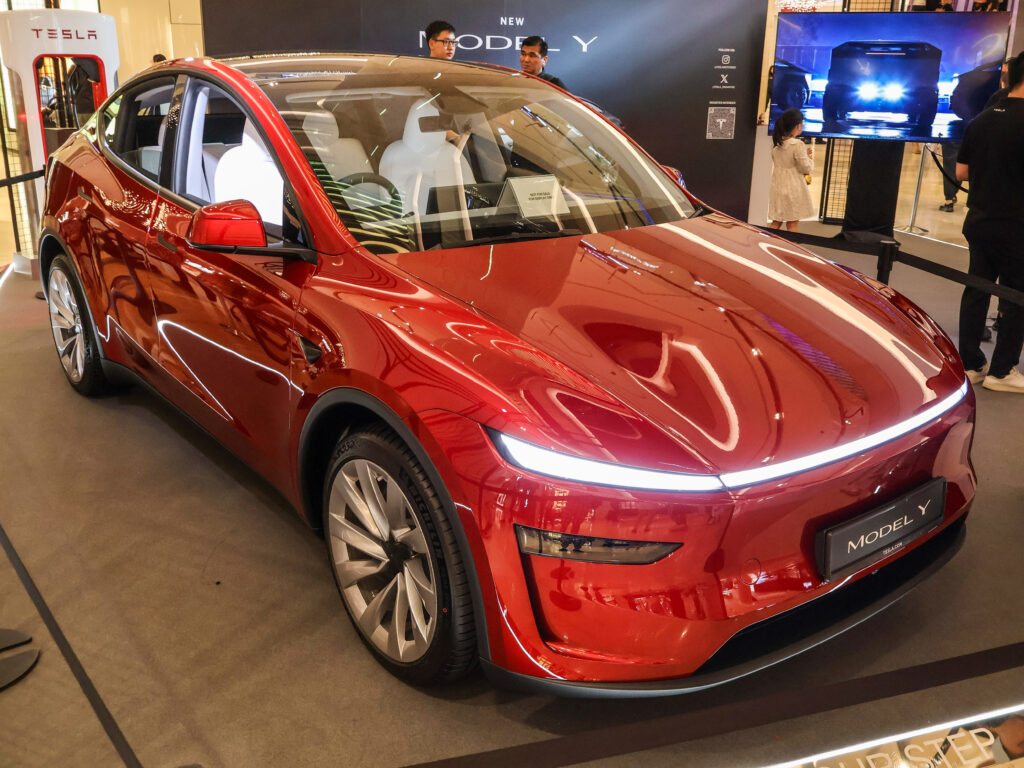
4. **Performance and Range of New Cheaper Models**Alongside the pricing and design adjustments, the newly introduced cheaper versions of the Model Y and Model 3 also feature a recalibration of their performance metrics, particularly concerning range. According to Tesla, “Both vehicles can travel 320 miles between charges,” which represents a practical and substantial range for most drivers. This figure, however, is “somewhat less than costlier versions,” indicating a tiered approach to performance aligned with the varied price points.
This differentiation in range is a direct consequence of the cost-cutting measures, likely involving battery pack configurations or software optimizations that prioritize affordability. While 320 miles remains highly competitive within the electric vehicle market, the slight reduction compared to premium models highlights Tesla’s strategy of offering a spectrum of choices to consumers. It ensures that even the entry-level options provide a compelling blend of utility and electric mobility, suitable for daily commutes and longer journeys alike, albeit with a subtle trade-off for the lower price tag.
The focus on a robust 320-mile range for these more accessible models demonstrates Tesla’s understanding of consumer expectations. In a market where range anxiety remains a factor for some prospective EV buyers, maintaining a significant travel distance between charges is crucial for widespread adoption. This strategic decision reinforces the viability of electric vehicles for a broad audience, ensuring that the cheaper Model 3 and Model Y remain highly attractive propositions even with slight adjustments to their maximum capabilities.
Car Model Information: 2020 Lexus RX 350 Base
Name: Tesla Model Y
Caption: Pre-refresh Tesla Model Y
Manufacturer: Tesla, Inc.
Production: January 2020 – present
Assembly: Unbulleted list
Designer: Franz von Holzhausen
Class: Unbulleted list
BodyStyle: SUV
Layout: Unbulleted list
Related: Unbulleted list
Motor: unbulleted list
Battery: val,Lithium-ion battery
ElectricRange: FTP-75
Charging: unbulleted list
Wheelbase: Unbulleted list
Length: Unbulleted list
Width: Unbulleted list
Height: Unbulleted list
Weight: Unbulleted list
Sp: us
Categories: 2020s cars, All Wikipedia articles written in American English, All articles lacking reliable references, All articles that may contain original research, All articles to be expanded
Summary: The Tesla Model Y is a battery electric compact crossover SUV produced by Tesla, Inc. since 2020. The vehicle was presented in March 2019 as the company’s fifth production model since its inception after the Roadster, Model S, Model X and Model 3.
After its 2019 introduction, the Model Y started production at the Tesla Fremont Factory in California, US in January 2020. Production at Giga Shanghai, China was added in December 2020, and at Gigafactory Texas, US since late 2021. Deliveries from Gigafactory Berlin-Brandenburg, Germany started in March 2022.
The Model Y is based on the Model 3 sedan and serves as a larger variant, with around 76 percent of parts being shared between the two and identical exterior and interior styling. While most Model Y are configured with two-row seating, in the US the Model Y offers optional third-row seats for a seven-passenger seating capacity.
In 2023, Tesla delivered 1.2 million Model Ys, making it the world’s best-selling vehicle that year, surpassing the Toyota Corolla and becoming the first electric vehicle to claim that title. With at least 2.16 million units delivered since its start of production up to December 2023, the Model Y is also the most popular electric vehicle of all time. In 2024 sales were second to the Toyota RAV4. A refreshed version of the Model Y was revealed in January 2025, with upgrades similar to the upgraded Model 3.
In mid-2025, Tesla unveiled and released the Model Y L, a long-wheelbase, six-seat variant of the Model Y.
Get more information about: Tesla Model Y
Buying a high-performing used car >>>
Brand: Tesla Model: Model Y
Price: $30,981 Mileage: 81,179 mi.
Read more about: Don’t Let Your Action Camera Become a Money Pit: 10 Critical Issues That Ruin Footage and Reliability
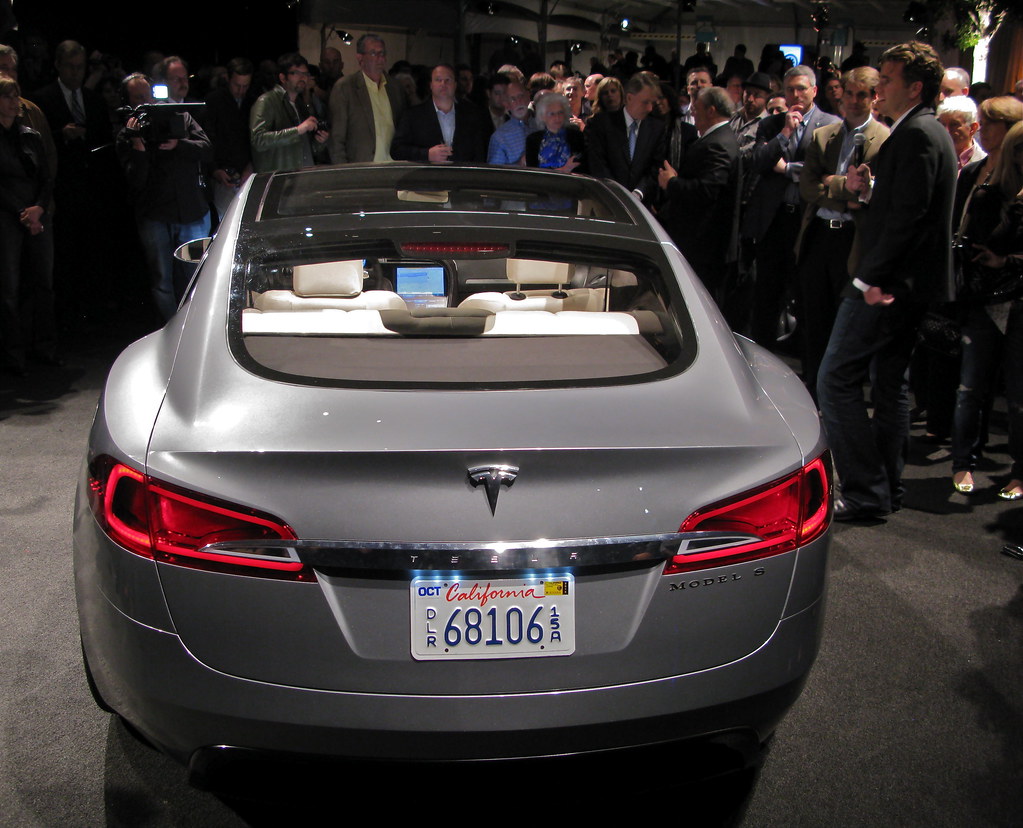
5. **Tesla’s Software-Centric Development & AI Integration**Tesla’s approach to vehicle development is profoundly rooted in its software capabilities, setting it apart from many traditional automakers. The company considers its core technologies to be “the battery, the computer software, and the proprietary motor,” with software playing an increasingly central role in defining vehicle functionality, safety, and user experience. This software-first philosophy extends from the driving dynamics to in-car entertainment and, critically, to advanced driver-assistance systems.
The continuous evolution of Tesla’s software is evident in its recent updates, which include the integration of artificial intelligence. In July 2025, “Tesla released a software update adding the artificial intelligence (AI) chatbot Grok to its vehicles.” This innovative feature provides “in-car chatbot functionality” for users in some markets. Furthermore, in August of the same year, “Tesla integrated Deepseek and Bytedance’s Doubao AIs into Chinese models,” demonstrating a region-specific adaptation of its AI strategy.
Significantly, the capabilities of these AI integrations vary by region. While the Grok update provides chatbot functionality without direct control over vehicle functions, “AI in Tesla’s Chinese vehicles may be used to control vehicle functions, as well as act as a chatbot.” This distinction highlights the company’s advanced software architecture and its potential for deep integration with vehicle controls, underscoring both the immense possibilities and the inherent complexities and risks associated with highly integrated software that governs critical vehicle operations.
Read more about: Ford’s $30,000 Electric Pickup: Charting a “Model T Moment” to Reshape America’s Automotive Future
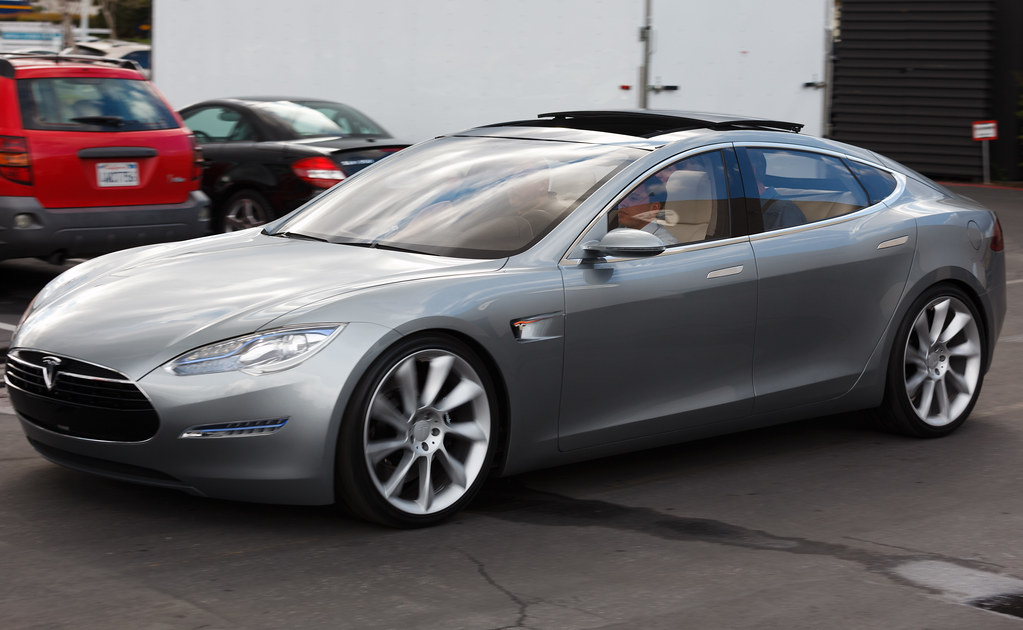
6. **History of General Safety Defects and Recalls**Despite its reputation for innovation and market leadership, Tesla has not been immune to scrutiny regarding vehicle safety and reliability. The company “has been the subject of lawsuits, boycotts, government scrutiny, and journalistic criticism,” with a notable aspect of these criticisms stemming from “allegations of multiple cases of whistleblower retaliation, worker rights violations such as ual harassment and anti-union activities, safety defects leading to dozens of recalls, the lack of a public relations department, and controversial statements from Musk.”
The existence of “safety defects leading to dozens of recalls” indicates a pattern that requires continuous attention and robust engineering oversight. While the specific details of these recalls are varied and not elaborated upon in the provided context, their cumulative presence underscores the inherent challenges in rapidly developing and deploying advanced automotive technology. Each recall, irrespective of its cause, demands a comprehensive response to maintain consumer trust and ensure compliance with regulatory standards, a critical aspect for any automaker, especially one pioneering new technologies.
This history serves as an important backdrop when considering any new reported vehicle issue, such as the described rollaway risk for Model 3 and Model Y. It emphasizes the critical importance of rigorous software testing, quality control, and responsive remediation processes within Tesla’s vertically integrated model. For a company that develops “many components in-house, such as batteries, motors, and software,” the responsibility for ensuring the safety and flawless operation of these interconnected systems rests entirely within its own ecosystem, making the integrity of its design and manufacturing processes paramount.
Read more about: Bypass These 6 Compacts: They Become Headaches for Any Mechanic After You Hit Triple Digits
7. **Intensifying Market Competition and Market Share Erosion**Tesla’s journey to dominating the electric vehicle market has been marked by pioneering innovation, yet its leadership position is increasingly being challenged. While the company still sells more electric vehicles in the United States than any other, its market share has notably dipped below 50 percent, signaling a maturing market and the rise of formidable competitors. This shift demands a closer look at the evolving competitive landscape and Tesla’s strategic responses to maintain its edge.
Indeed, the automotive industry has seen a rapid acceleration in EV development from both established giants and nimble newcomers. Traditional automakers like General Motors, BMW, and Volkswagen are now heavily invested in their electric lineups, offering a variety of compelling alternatives. More critically, new challengers, particularly from China, such as BYD, have made significant inroads, with BYD even surpassing Tesla as the largest maker of electric vehicles globally. This influx of competition creates a more fragmented market where consumer choices are expanding well beyond Tesla.
This fierce competition has led to criticism from analysts and investors who argue that Tesla has not introduced enough new models to counter the increasing variety offered by rivals. The Cybertruck, Tesla’s newest vehicle, has reportedly sold poorly, failing to generate the anticipated sales volume. Even the updated version of the Model Y, the company’s best-selling vehicle, has struggled to stem the decline in Tesla’s share of the global electric vehicle market, indicating a need for more disruptive innovation or aggressive market strategies.
The strategic adjustments, such as the recent introduction of cheaper Model Y and Model 3 versions, are direct responses to these market pressures and the expiry of federal tax credits. However, their impact on preventing further market share erosion remains a key concern. As the global EV market continues to grow and diversify, Tesla faces the critical task of not only innovating but also adapting its product pipeline and pricing strategies to stay ahead in an increasingly crowded and competitive arena.
Read more about: Tesla’s Strategic Price Adjustments and Their Profound Impact on the Used Car Market

8. **Elon Musk’s Direct Influence on Tesla’s Product Pipeline and Strategic Shifts**Elon Musk’s indelible influence on Tesla’s direction is undeniable, often shaping the company’s product development and strategic pivots with a distinct, sometimes controversial, vision. His leadership has driven Tesla to achieve remarkable feats, but it has also led to decisions that have drawn scrutiny and disappointment from investors and the wider market. Understanding this influence is crucial to comprehending Tesla’s current trajectory and future potential.
A prime example of Musk’s direct intervention in product development is the cancellation of the budget-priced electric vehicle project, which was slated for production in Mexico and expected to sell for around $25,000. This highly anticipated affordable EV was killed to reallocate company resources toward the development of autonomous taxis and humanoid robots. While these future-forward initiatives align with Musk’s long-term vision of a fully autonomous and AI-driven future, the decision left many consumers and investors eager for an entry-level Tesla vehicle disappointed.
Investor sentiment has, at times, diverged from Musk’s strategic priorities. Speculation often runs high before Tesla product announcements, with expectations for vehicles like the long-promised two-door sports car, the Roadster, or even more futuristic concepts like a flying car. However, the unveiling of less glamorous, albeit strategically important, products like the cheaper Model 3 and Model Y variants has occasionally led to market disappointment, reflected in Tesla shares closing down after such announcements. This highlights a tension between Musk’s grand visions and the market’s demand for tangible, immediate product expansions.
Furthermore, Musk’s public political advocacy and embrace of certain political stances have recently been correlated with significant decreases in Tesla’s stock price and sales, particularly across Europe. Polling data suggests a strong link between his ties to political figures and decreasing public perception of Tesla, leading to protests and acts of vandalism. This illustrates how the personal brand and public statements of a CEO, especially one as prominent as Musk, can directly impact a company’s financial performance and public image, adding another layer of complexity to Tesla’s market challenges.
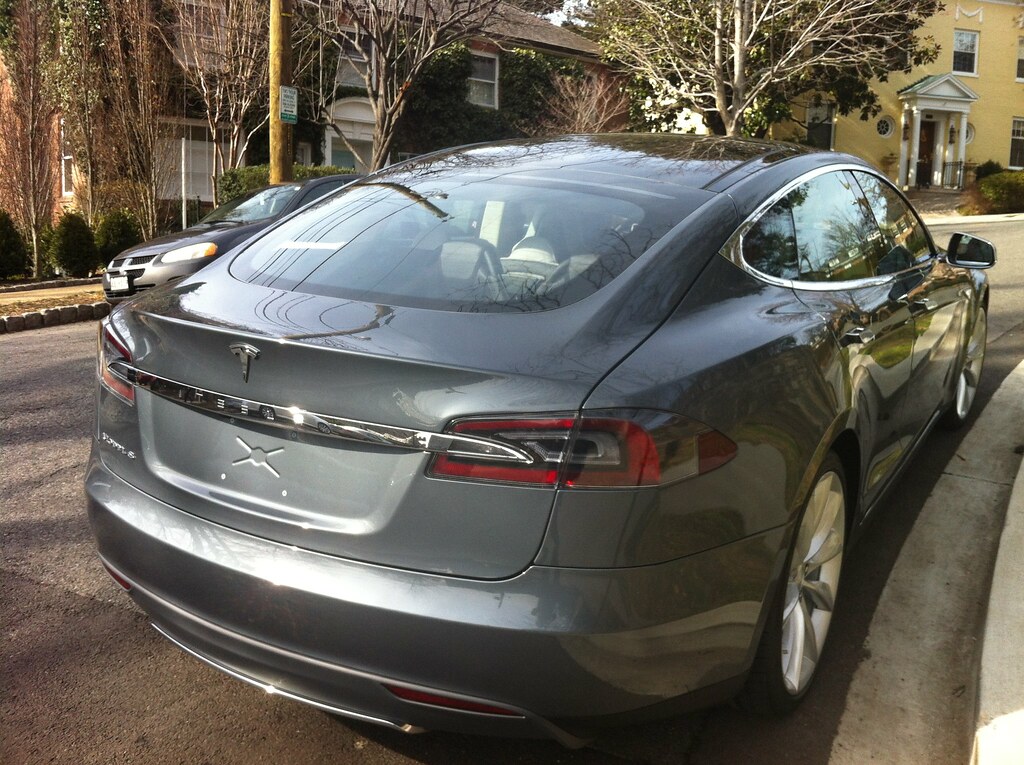
9. **Tesla’s Distinctive Sales and Service Model**Tesla has fundamentally re-envisioned the automotive sales and service experience, deliberately eschewing the traditional franchised dealership model that has long defined the industry. Instead, the company operates with a direct-to-consumer approach, selling its vehicles exclusively through its website and a network of company-owned stores. This strategy, a significant departure from convention, allows Tesla to maintain tighter control over the customer journey, from initial inquiry to vehicle delivery and beyond.
These company-owned locations, often referred to as “galleries” in jurisdictions where direct sales are prohibited, are strategically placed in high-traffic retail shopping districts, malls, or other commercial hubs, rather than in the auto-dealership rows typical of other brands. This positioning aims to educate and inform potential customers about Tesla’s products in a low-pressure environment, integrating the car-buying experience into everyday retail activities and reaching a broader, more diverse audience.
Beyond sales, Tesla’s service strategy is equally distinctive, prioritizing remote diagnosis and repair as a first line of defense for any vehicle issues. If a problem cannot be resolved remotely, a mobile technician is dispatched to the customer’s location, offering unparalleled convenience. For more complex repairs, customers are directed to Tesla-owned service centers. Notably, Tesla has stated its intention not to profit from vehicle servicing, a stark contrast to the traditional automotive industry where service and parts often represent a significant revenue stream for dealerships.
This commitment to a streamlined, customer-centric service model is also reflected in the evolution of its maintenance recommendations. Initially suggesting inspections every 12,500 miles or annually, Tesla later revised its guidance in early 2019 to state that its vehicles do not require annual maintenance and regular fluid changes, instead recommending periodic servicing of components like brake fluid, air conditioning, tires, and air filters. This shift underscores the inherent differences in maintenance requirements for electric vehicles and Tesla’s proactive approach to optimizing the ownership experience.
Read more about: The Cybertruck Chronicle: Decoding Tesla’s Electrifying Pickup from Concept to Reality

10. **The Transformative Role of Tesla’s Charging Infrastructure**Central to Tesla’s success and the wider adoption of electric vehicles is its robust and extensive charging infrastructure, a critical asset that has long differentiated it from competitors. The Supercharger network, introduced in 2012, has become synonymous with reliable and fast charging for Tesla owners, alleviating range anxiety and enabling long-distance travel. This network has grown exponentially, boasting approximately 7,700 Supercharger stations with over 73,000 connectors worldwide as of September 2025, primarily concentrated in Asia Pacific, North America, and Europe.
These Superchargers are designed for high-voltage direct current fast charging, currently capable of outputting as much as 325 kilowatts (kW), with ambitious plans to increase capacity to 500 kW in the future. This rapid charging capability allows Tesla vehicles to replenish a significant portion of their battery in a relatively short amount of time, making road trips and daily charging more convenient. The strategic placement of these stations along major travel routes and in urban centers has been a key factor in encouraging EV adoption by ensuring accessible charging options.
Complementing the Supercharger network is Tesla’s “Destination Chargers,” a network of slower chargers intended for locations where vehicles are typically parked for several hours, such as hotels, restaurants, and shopping centers. Unlike Superchargers, these are not owned by Tesla; instead, property owners install the devices and manage pricing. This collaborative model expands charging availability into diverse locales, providing convenient overnight or daytime charging opportunities that further integrate EVs into daily life.
Perhaps one of the most significant developments in the charging landscape is the widespread adoption of Tesla’s North American Charging Standard (NACS) adapters by almost all major North American EV manufacturers between May 2023 and February 2024. This move, expected to be fully implemented by 2025, consolidates charging standards and is anticipated to become a stable source of recurring revenue for Tesla. It cements Tesla’s Supercharger network not just as a proprietary advantage but as a foundational infrastructure for the entire North American EV ecosystem, further solidifying its critical role in the industry’s evolution.
Read more about: Beyond 2025: Unpacking the Future of Electric Trucks for Work Sites – High Efficiency and Zero Emissions Redefined
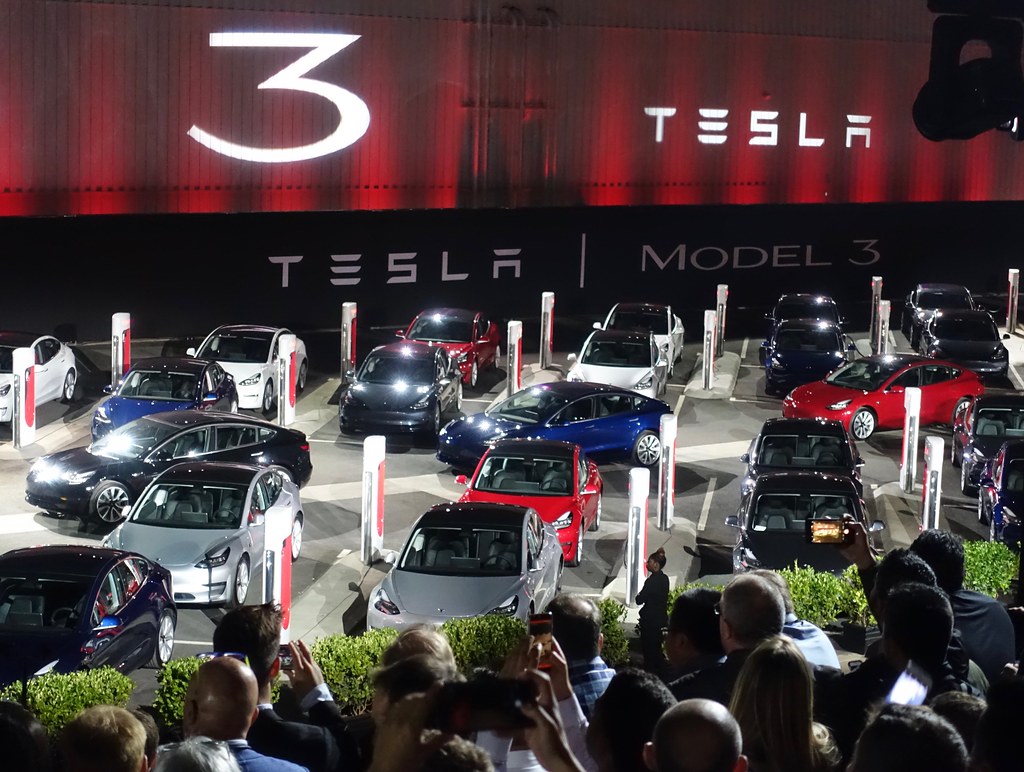
11. **The Model 3 and Model Y: Catalysts for Mass EV Adoption**The introduction of the Model 3 and Model Y marked a pivotal moment in Tesla’s strategy, shifting from niche luxury vehicles to more accessible, mass-market electric cars. The Model 3, unveiled in 2016 as a more affordable sedan, garnered an overwhelming response, accumulating over 325,000 paid reservations within just a week. This unprecedented demand clearly demonstrated a strong consumer appetite for a well-designed, lower-priced electric vehicle, signaling a significant turning point for EV adoption globally.
However, the path to mass production was not without its tribulations, famously dubbed “production hell” by the company. Tesla invested heavily in robotics and automation, which paradoxically slowed production and led to significant delays. Despite these initial struggles, the company eventually overcame these manufacturing hurdles, and by the end of 2018, the Model 3 had successfully emerged as the world’s best-selling electric car, a title it held from 2018 to 2021. Its cumulative sales surpassed 1 million units by June 2021, proving the viability of a high-volume EV.
Building on the success of the Model 3, Tesla introduced the Model Y mid-size crossover SUV in 2019, sharing approximately 75 percent of its content with its sedan counterpart. Deliveries began in March 2020, and the Model Y quickly replicated and even surpassed the Model 3’s market impact. In a truly historic achievement, the Model Y outsold the venerable Toyota Corolla in the first quarter of 2023 to become the world’s best-selling car, marking the first time an electric vehicle claimed this prestigious global title.
These two models have irrevocably changed the perception and reality of electric vehicles, demonstrating that they can not only compete with but also outperform traditional internal combustion engine vehicles in terms of sales volume. By offering compelling designs, competitive range, and increasing affordability, the Model 3 and Model Y have acted as powerful catalysts, accelerating the mainstream adoption of EVs and profoundly influencing the direction of the global automotive industry towards sustainable mobility. Their continued success, especially with the newer, cheaper versions, reinforces Tesla’s role in democratizing electric transportation.
Car Model Information: 2020 Cadillac Escalade Premium Luxury
Name: Tesla Model 3
Manufacturer: Tesla, Inc.
Production: 2017–present
Assembly: unbulleted list
Designer: Franz von Holzhausen
Class: Mid-size car
BodyStyle: Sedan (car)
Layout: unbulleted list
Related: Tesla Model Y
Motor: unbulleted list
Transmission: Single-speed fixed (9:1 ratio)
Battery: unbulleted list
ElectricRange: unbulleted list
Charging: unbulleted list
Wheelbase: cvt
Length: unbulleted list
Width: cvt
Height: unbulleted list
Weight: cvt
Caption: 2019 Tesla Model 3 Performance
Categories: 2020s cars, ANCAP large family cars, All-wheel-drive vehicles, All Wikipedia articles in need of updating, All Wikipedia articles written in American English
Summary: The Tesla Model 3 is a battery electric powered mid-size sedan with a fastback body style built by Tesla, Inc., introduced in 2017. The vehicle is marketed as being more affordable to more people than previous models made by Tesla. The Model 3 was the world’s top-selling plug-in electric car for three years, from 2018 to 2020, before the Tesla Model Y, a crossover SUV based on the Model 3 chassis, took the top spot. In June 2021, the Model 3 became the first electric car to pass global sales of 1 million.
A facelifted Model 3 with revamped interior and exterior styling was introduced in late 2023 for countries supplied by Gigafactory Shanghai and in early 2024 in North America and other countries supplied by the Tesla Fremont Factory.
Get more information about: Tesla Model 3
Buying a high-performing used car >>>
Brand: Tesla Model: Model 3
Price: $36,998 Mileage: 111,633 mi.
Read more about: The Next Generation Fuels: Unpacking the Controversial Alternatives Poised to Replace Gasoline in the Coming Decade
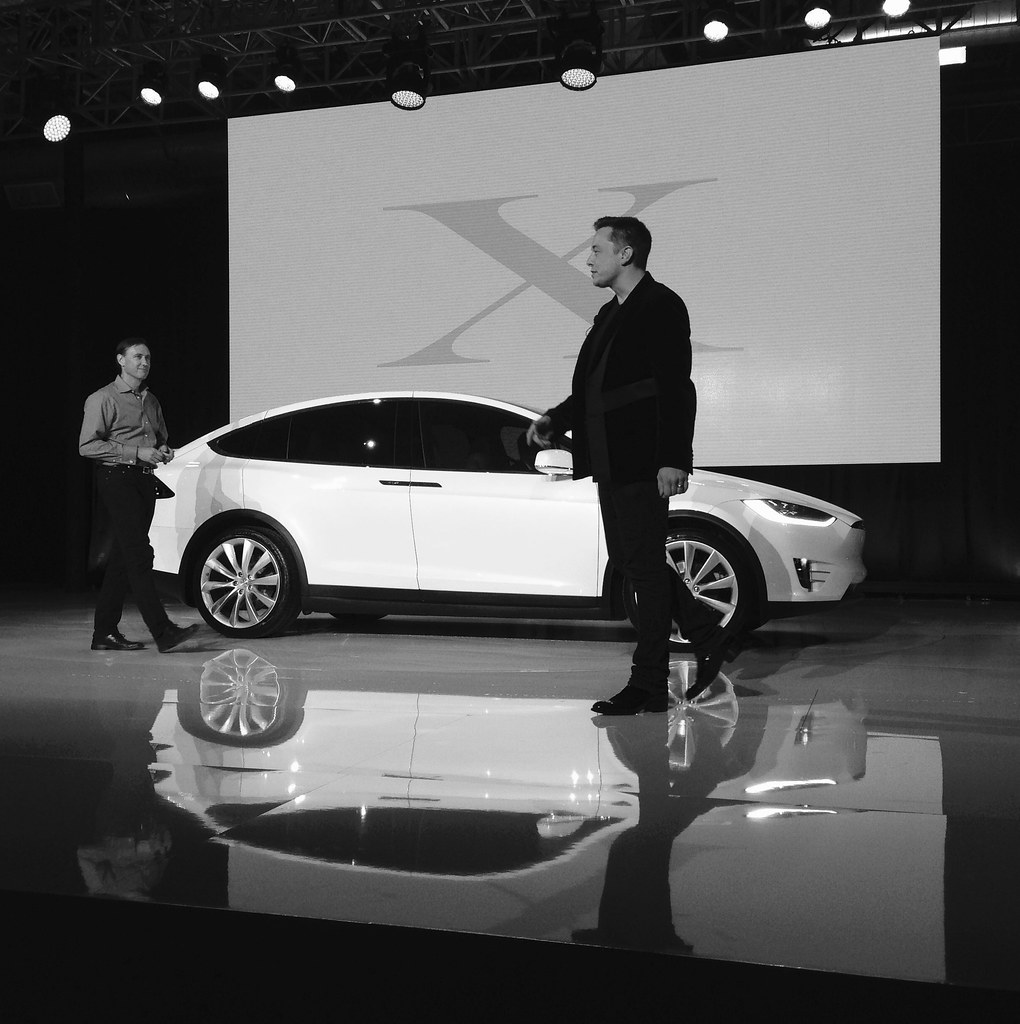
12. **Vertical Integration: Tesla’s Double-Edged Sword for Innovation and Reliability**Tesla’s business strategy is distinctively characterized by its deep vertical integration, a practice that sets it apart from the vast majority of automotive manufacturers. Unlike competitors who typically outsource 80% of components to suppliers, Tesla develops many critical elements in-house, including batteries, motors, and, crucially, its complex software systems. This approach allows for unparalleled control over the entire product ecosystem, from design to manufacturing and performance.
The advantages of such extensive vertical integration are clear: it facilitates rapid innovation and a highly synchronized development cycle. By owning the entire stack, Tesla can quickly iterate on designs, integrate software and hardware seamlessly, and optimize performance across all vehicle components. This holistic control is particularly evident in its advanced driver-assistance systems and the recent integration of AI chatbots like Grok and Deepseek, which leverage Tesla’s proprietary software architecture for deep vehicle function control in certain markets.
However, this strategic choice also presents significant challenges and responsibilities. By developing so many components in-house, Tesla shoulders the entire burden of quality control and reliability. This direct accountability means that issues, particularly software glitches or safety defects, trace directly back to Tesla’s own engineering and manufacturing processes. The history of “safety defects leading to dozens of recalls,” as mentioned in Section 1, underscores the immense pressure and inherent complexities of managing such an integrated system at scale.
The recent recall due to a rollaway risk caused by a software glitch in Model 3 and Model Y vehicles serves as a stark reminder of this double-edged sword. While vertical integration enables cutting-edge innovation and a unique user experience, it also demands exceptionally rigorous testing, quality assurance, and robust remediation processes. The integrity of Tesla’s design and manufacturing processes becomes paramount when critical vehicle functions are governed by deeply integrated, in-house developed software.
Moving forward, Tesla’s continued reliance on vertical integration will undoubtedly shape its ability to balance rapid technological advancement with the imperative of unwavering reliability and consumer trust. The company’s future success will hinge not only on its capacity for innovation but also on its ability to meticulously manage the complexities and inherent risks of building nearly every component of its vehicles from the ground up, ensuring that groundbreaking technology also means uncompromising safety and quality for its millions of users.
As we navigate the dynamic landscape of electric vehicles, Tesla’s journey remains a compelling narrative of innovation, disruption, and ongoing challenges. The company continues to push the boundaries of automotive technology, from advanced AI integrations to pioneering charging networks and unique sales models. Yet, the recent recall serves as a powerful reminder that even the most innovative companies must continuously prioritize safety and reliability, especially as their technologies become more intricate and their global footprint expands. Tesla’s ability to adapt to intensifying competition, temper its ambitious product roadmap with consistent delivery, and refine its vertically integrated approach will ultimately determine its sustained leadership in the electric revolution, proving that true progress lies in harmonizing groundbreaking vision with unwavering execution and an absolute commitment to its customers.”

